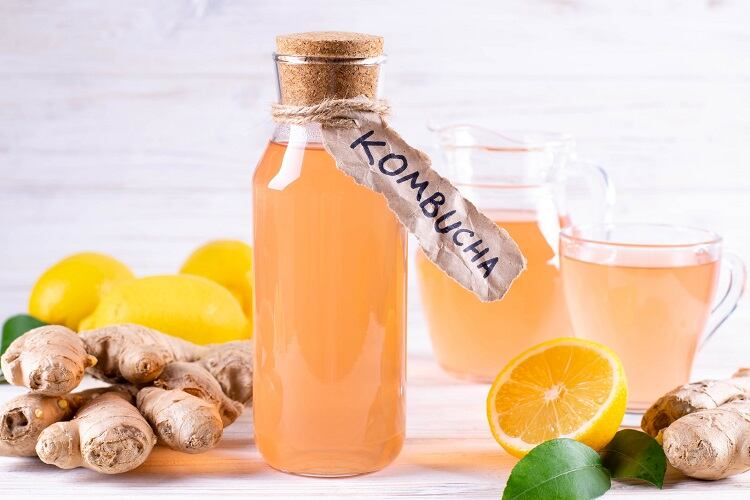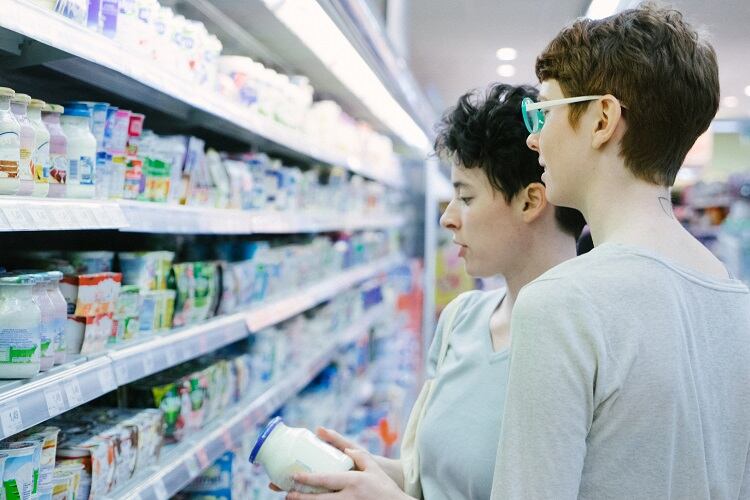Gut health, immunity, and wellness in general have been trending in the food and beverage space for some time. While the coronavirus pandemic advanced consumer interest in functional diets, experts suggest in a post-pandemic world, this ‘trend’ is here to stay.
According to food intelligence platform Tastewise, for example, 30% more consumers are seeking functional benefits from food and drink than they were in late 2019.
Gut health, which refers to the health of the microbiome in the gastrointestinal tract, is important for a number of reasons.
“Your gut is your first brain,” explained Hannah Crum, CEO of Kombucha Kamp and president of Kombucha Brewers International (KBI) at the FoodNavigator Positive Nutrition broadcast series. “We need to be consuming products that have soil-based organisms…to provide the immune system the nutrients that all the microbes that live within our body require, in order for our immune system to be healthy and strong.”
So how is industry innovating to meet demand for ‘gut healthy-supporting’ and ‘immunity-boosting’ products?
Probiotics: ‘Ancient technology, modern wisdom’
Probiotics are microorganisms thought to provide health benefits when consumed, notably by improving or restoring the gut flora. Fermented foods such as yogurts, sauerkraut, and kefir all contain live microorganisms.
Kombucha, a fermented, effervescent tea, is also a good source of probiotics.
According to Crum, humans have ‘intuitively’ understood the value of fermented products since the ‘dawn of time’. “We think of [these products as using] ancient technology with modern wisdom,” she told delegates.
The majority of kombucha produced today is still founded on ‘wild fermentation’ processes, which uses a ‘mother culture’ that has been passed down over generations. At the same time, industry has also observed innovation in ‘bespoke cultures’.
“We are really starting to understand our microbes and trying to create syntheses of different compositions of bacteria and yeast to yield specific outcomes,” she explained.

The sector has also seen examples of prebiotics being added to kombucha. As scientific research develops, the Kombucha Kamp CEO expects we will discover that kombucha innately contains both pre- and probiotics, “as well as potentially postbiotics and symbiotics”.
Tapping chicory root for prebiotic benefits
Innovation is also prevalent in prebiotics – the term used to describe specific plant fibres that help healthy bacteria (probiotics) grow in the gastrointestinal gut.
It is understood prebiotics can alter the composition of organisms in the gut microbiome.
For functional drinks brand MOJU, it was market focus on probiotics that prompted the business to develop a prebiotic shot. The product launched in 2021.
“If you look at the market, there are a lot of probiotic products available and there’s not many prebiotics available,” explained Ross Austen, Research and Nutrition lead at MOJU, “particularly in a shot [format].”
MOJU’s prebiotic blend ingredient, which is used in the product, is made from chicory root inulin, green banana powder, golden kiwi powder, and baobab powder.
“We saw the opportunity for diversity. If we look at gut health, a diverse diet is integral to promote a diverse microbiome. Therefore, if you look at the number of prebiotics, fibre resistant starches, within the products, and typical ingredients that individuals in the UK wouldn’t necessarily eat on a regular basis, it puts them on a good track to making better choices throughout the day.”

Another brand leveraging inulin for its prebiotic goodness is Prodigy Snacks. Overall total fibre content, including inulin, in one of Prodigy’s chocolate offerings stands at 9-10g.
“Gut health is high on the agenda. It affects emotional wellbeing, it affects brain function, and it affects immunity in a big way,” Sameer Vaswani, CEO and founder of Prodigy told delegates at the event.
Prodigy’s approach is to the take an ‘ubiquitous’ products, such as chocolate, and give it a ‘sense of functionality’.
For Vaswani, supplementing diets with pre- and probiotics is important, but what we don’t put into our system is also important. For this reason, Prodigy bars are free from refined sugar – an ingredient Vaswani considers to be ‘toxic’ for the gut.
Sweeteners are also not the answer, we were told. Prodigy goes for ‘natural’ sugars in low quantities, such as coconut sugar or the South American ingredient lucuma. “The combination of these products delivers a very low sugar content for us, but still has the nutritional and functional benefit of prebiotics.”
A complex solution to a complex problem
One way food manufacturers can cater to growing demand for gut health-interested consumers is by incorporating specialised ingredients into product formulation.
Dr Ashok Duby is Senior Scientist and Nutrition Sciences Lead and Tata Chemicals, an Indian-headquartered company that has developed a dietary fibre ingredient, branded Fossence, for food and beverage makers.
According to Dr Dubey, supplementation of Fossence leads to an increase in abundance of beneficial bacteria such as Bifidobacteria and Lactobacillus.
While microbiome R&D is an important piece of the puzzle, Dr Dubey suggested industry can do more than single out prebiotics or probiotics as standalone panaceas for health.
“A boundary was created some 20 years back, [resulting in the idea that] prebiotics will do this, and probiotics will do that…
“I think that boundary is [breaking down] now and there is a greater understanding that our gut microbiota is so complex. The foods that we eat are so complex. It’s not just prebiotics and probiotics, the solution that we provide should be a combination of all these things.”
An increasing number of filed patents, that claim to enhance immunity, are doing just that, he continued: “They’re a combination of all these things,” including pre- and probiotics.
Given that our microbes are complex, the solution to nurturing them should mimic their complexity. If done correctly, based on scientific understanding, Dr Dubey believes ‘efficiency will be higher’.
Facing the ‘huge problem’
The science is not there yet, and won’t be until reactions between the microbiome and host are better understood, suggested Anthony Finbow, CEO of Eagle Genomics.
Eagle Genomics analyses microbiome data for businesses – including food and beverage players – working in this space.
In a similar vein to Dr Dubey, Finbow believes we must ‘move beyond’ thinking about individual organisms. “These organisms replicate 60-300 times a day. In abundant environments…they aggregate genetic content, in depleted environments they shed genetic content…
“So there is a huge challenge. The hard problem is not consciousness, the hard problem is understanding gut host microbiome interactions.”
Eagle Genomics has high hopes for the future. ‘Large corporations’ in food are more interested in extending consumers’ health spans than they once were. It’s less about delivering calorific content these days, Finbow continued.
“We are at the beginning of a systems change, where organisations are waking up to the natural capital contributions of microbiomes…
“We’re at the beginning of a bio-revolution, and the microbiome is the most approximate [metaphoric] battleground for that bio-revolution.”
To watch the full panel discussion, or if you missed any of the FoodNavigator’s Positive Nutrition broadcast series, you can still access all of our sessions and handouts on-demand for the next 90 days. Click here to REGISTER FOR FREE.




